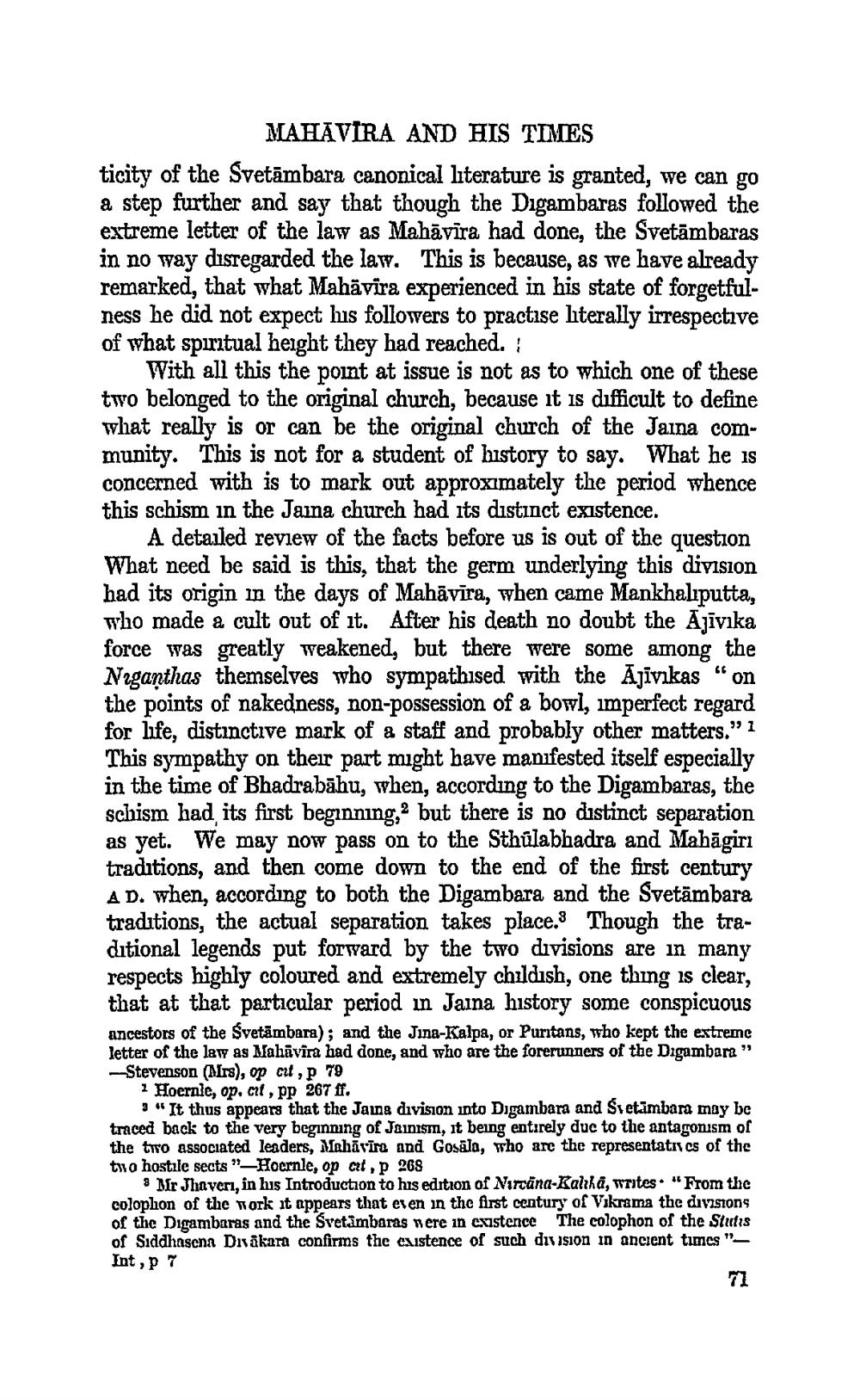________________ MAHAVIRA AND HIS TIMES ticity of the Svetambara canonical literature is granted, we can go a step further and say that though the Digambaras followed the extreme letter of the law as Mahavira had done, the Svetambaras in no way disregarded the law. This is because, as we have already remarked, that what Mahavira experienced in his state of forgetfulness he did not expect his followers to practise hterally irrespective of what spiritual height they had reached. : With all this the point at issue is not as to which one of these two belonged to the original church, because it is difficult to define what really is or can be the original church of the Jaina community. This is not for a student of history to say. What he is concerned with is to mark out approximately the period whence this schism in the Jaina church had its distinct existence. A detailed review of the facts before us is out of the question What need be said is this, that the germ underlying this division had its origin in the days of Mahavira, when came Mankhaliputta, who made a cult out of it. After his death no doubt the Ajivika force was greatly weakened, but there were some among the Niganthas themselves who sympathised with the Ajivikas "on the points of nakedness, non possession of a bowl, imperfect regard for life, distinctive mark of a staff and probably other matters." 1 This sympathy on their part might have manifested itself especially in the time of Bhadrabahu, when, according to the Digambaras, the schism had its first beginning, but there is no distinct separation as yet. We may now pass on to the Sthulabhadra and Mabagiri traditions, and then come down to the end of the first century AD. when, according to both the Digambara and the Svetambara traditions, the actual separation takes place. Though the traditional legends put forward by the two divisions are in many respects highly coloured and extremely childish, one thing is clear, that at that particular period in Jaina history some conspicuous ancestors of the Svetambara); and the Jina-Kalpa, or Puritans, who kept the extreme letter of the law as Malavira had done, and who are the forerunners of the Digambara" Stevenson (Irs), op cit, 779 * Hoernie, op. cit, pp 267 ff. 3 " It thus appears that the Jaing division into Digambara and Sietambara may be traced back to the very beginning of Jainism, it being entirely duc to the antagonism of the tro associated leaders, Mahavira and Gosala, who are the representatives of the two hostile sects"--Hoernle, op art, 268 3 Mr Jhaveri, in his Introduction to his edition of Nirvana-Kalzha, writes "From the colophon of the work it appears that even in the first century of Vikrama the divistons of the Digambaras and the Svetambaras were in existence The colophon of the Stutis of Siddhascna Divakara confirms the existence of such division in ancient times"Int, P 7




